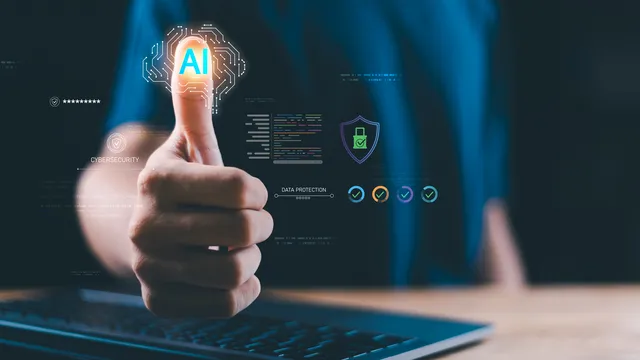Predictions for the Future of IT Industry in 2025

As more and more companies become a part of the digital age, the demand for skilled IT professionals is growing at an alarming rate. This has led to an increase in demand for offshore developers. However, there are many things you should know about hiring a skilled team of offshore developers and implying IT development best practices before you start your search. You need to keep an eye on both talent and technology trends for the Future of IT to carry out a successful project in 2025. You have to think ahead. And that’s where this article will come in handy for you.
In this article, we are going to discuss a few IT trends that will dominate the year 2025. Most often it’s not the new trends that revolutionize the industry but the ones that are already in practice and are creating a real impact for both your business and your clients. So let us dive into some of these Future of IT trends for 2025.
Programming languages
In 2025, the Future of IT Industry trends are improving a lot for programming languages will be more ubiquitous than ever before.
We’re already seeing this trend today as companies like Google and Microsoft are pushing for developers to create applications using their proprietary platforms (e.g., React Native, Flutter).
In 2025, you can expect this trends to continue as companies look to build their programming languages that will allow developers to write code once and deploy it across multiple platforms.
This isn’t a new concept. Companies like IBM have been doing this for years with their Blue-Gene supercomputers which were designed to be compatible with Linux, but also run on their proprietary architecture called CellBE.
We’ll see more languages designed for embedding in other applications. The most popular languages, such as Python and Ruby, are already getting there.
Systems like these are very common in business use cases today (for example, Salesforce or QuickBooks). And they’re likely to become even more widespread as they become easier to set up and maintain.
Also Read: The Future of AI: How Artificial Intelligence Will Change the World
Cross-platform development
Cross-platform development is a practice that has been around for some time, but it will continue to grow in popularity. As more and more software developers transition to this methodology, the need for tools and resources designed specifically for cross-platform development will increase. This will be especially true as more companies make their applications available on multiple platforms.
The most basic form of cross-platform development involves creating a single codebase that works across multiple platforms. This requires some platform-specific coding, but it allows developers to create one application that can be deployed on multiple operating systems without having to rewrite the application from scratch each time.
A slightly more advanced form of cross-platform development involves using APIs or SDKs from one platform to access features from another platform. This allows developers to access various services or data sources without having to write any code specific to those services or sources. It also reduces the amount of time required for developing an app because you don’t have to write all of the code yourself; instead, you just use someone else’s API or SDK and make a few minor tweaks here and there if necessary.
Blockchain
Blockchain is a public, transparent, and distributed database that maintains data through a consensus mechanism. The blockchain was originally developed to support cryptocurrencies such as Bitcoin, but it has many other applications, including supply chain management and identity verification.
The blockchain itself is not centralized and can be accessed by anyone with an internet connection who wants all transaction information recorded on it. Users must connect to the network by downloading a program called a “wallet.” This wallet allows them to send or receive coins from other users, as well as view all transactions that have taken place since its creation.
There are several different types of wallets available including desktop wallets, mobile wallets, and web-based wallets among others.
In 2025, we will see the widespread adoption of blockchain technology across industries and geographies. Blockchain will enable secure transactions between users without an intermediary or central authority. For example, Walmart recently announced it would use blockchain technology to track its leafy greens from farm to store shelf. This will help prevent contamination and fraud by providing an immutable record of every step in the process from farm to fork.
Human augmentation
Augmented reality, virtual reality, and mixed reality are some of the most exciting technologies that are emerging in the world right now. These technologies are expected to have a huge impact on our lives in the coming years and decades.
In 2025, we’ll see a new generation of augmented reality devices that look more like ordinary glasses than they do today’s headsets or smart glasses. They’ll have built-in cameras that can see what you’re looking at or focus on something else, while also providing other information about your surroundings through augmented reality overlays.
As companies like Google, Microsoft, and Apple continue to push the boundaries of artificial intelligence and machine learning, it is only a matter of time before we see these technologies become part of our everyday lives.
We are already starting to see some of these developments with devices such as Amazon’s Alexa, Apple’s Siri, and Microsoft’s Cortana. These devices are becoming more intelligent every day and can respond to commands more quickly than ever before. However, they cannot still understand natural language and often struggle when asked questions that require them to think outside the box.
Also Read: Transforming IT Service Management
Nearshore software development
Nearshore software development is the process of outsourcing some or all of your application development to a provider in a nearby country. The most common approach to nearshoring is to have a vendor in India build your applications, but as other countries such as Pakistan and the Philippines begin to offer similar rates and quality levels, companies are increasingly turning to these locations as well.
The advantage of nearshoring is that you can get a high-quality product at a cheaper price than if you were to hire developers locally. If you’re looking for a short-term solution, this might be the best option. However, if you plan on maintaining a long-term relationship with your development team (or if they’re responsible for developing critical parts of your infrastructure), then it may be worth considering an onshore team instead.
Summary
The trends discussed here won’t ‘revolutionize’ the industry, but they will have a real impact on how the Future of IT departments operate in the coming years. If you are an IT professional and want to make sure you are ready for your roles or if you are an employer looking for the best IT professionals for your team these trends can help.






